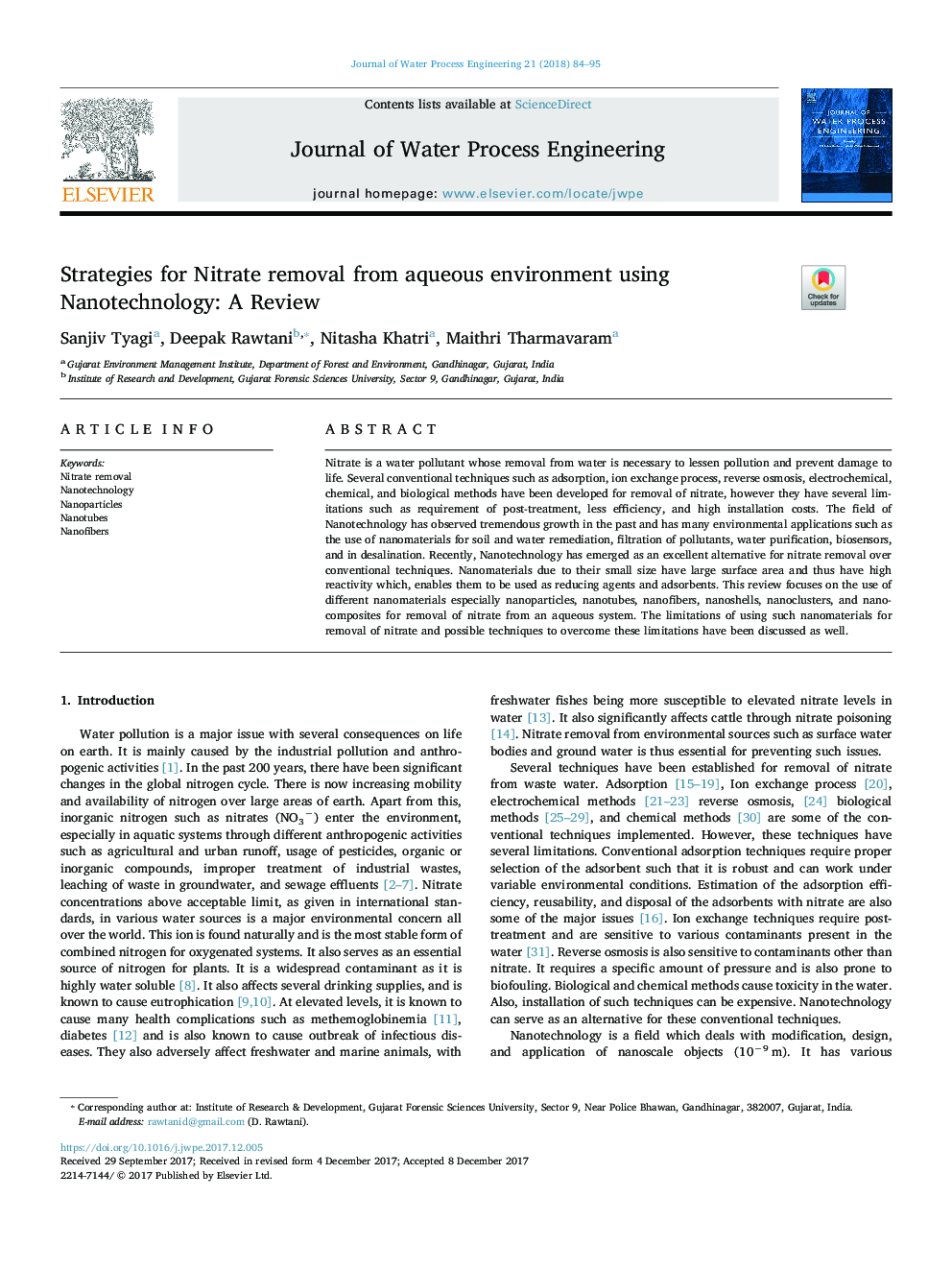| Article ID | Journal | Published Year | Pages | File Type |
|---|---|---|---|---|
| 6672027 | Journal of Water Process Engineering | 2018 | 12 Pages |
Abstract
Nitrate is a water pollutant whose removal from water is necessary to lessen pollution and prevent damage to life. Several conventional techniques such as adsorption, ion exchange process, reverse osmosis, electrochemical, chemical, and biological methods have been developed for removal of nitrate, however they have several limitations such as requirement of post-treatment, less efficiency, and high installation costs. The field of Nanotechnology has observed tremendous growth in the past and has many environmental applications such as the use of nanomaterials for soil and water remediation, filtration of pollutants, water purification, biosensors, and in desalination. Recently, Nanotechnology has emerged as an excellent alternative for nitrate removal over conventional techniques. Nanomaterials due to their small size have large surface area and thus have high reactivity which, enables them to be used as reducing agents and adsorbents. This review focuses on the use of different nanomaterials especially nanoparticles, nanotubes, nanofibers, nanoshells, nanoclusters, and nanocomposites for removal of nitrate from an aqueous system. The limitations of using such nanomaterials for removal of nitrate and possible techniques to overcome these limitations have been discussed as well.
Related Topics
Physical Sciences and Engineering
Chemical Engineering
Chemical Engineering (General)
Authors
Sanjiv Tyagi, Deepak Rawtani, Nitasha Khatri, Maithri Tharmavaram,
